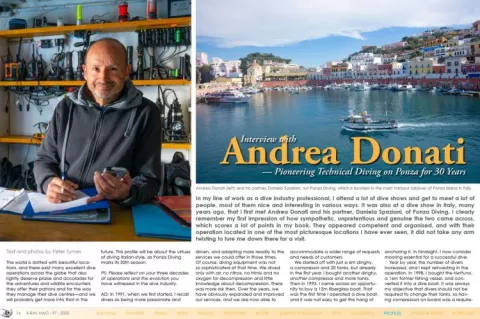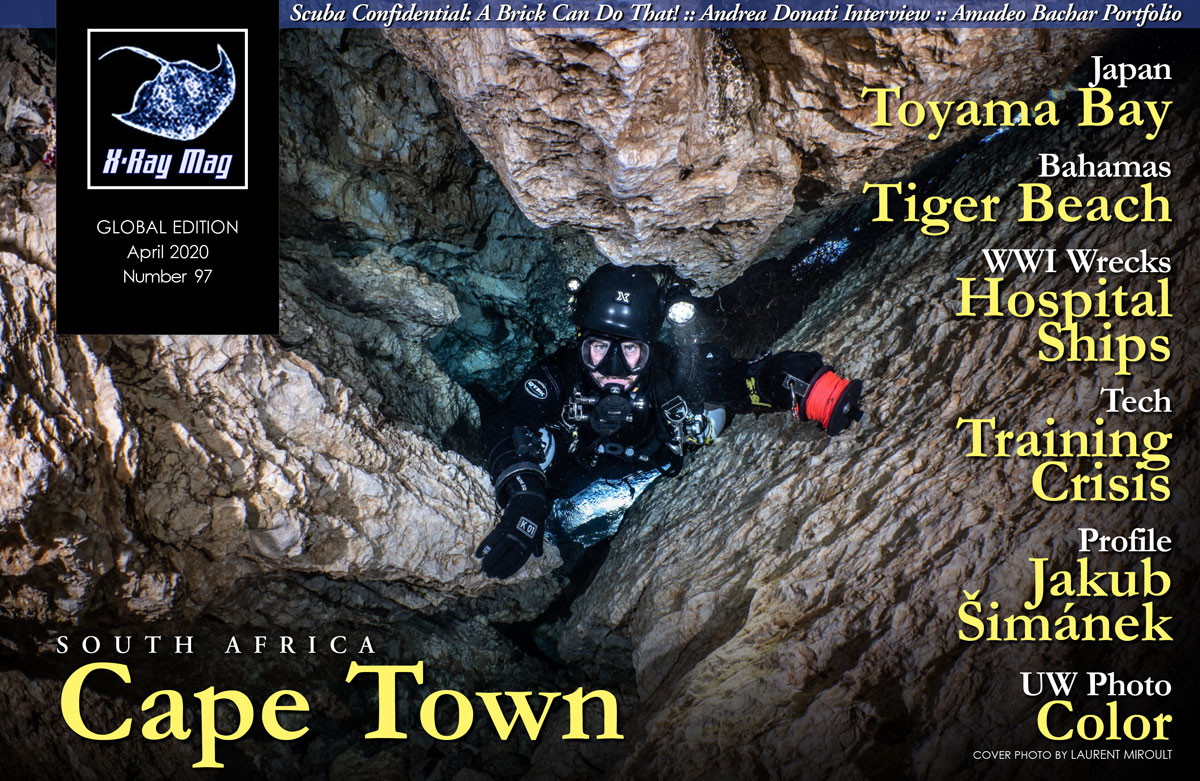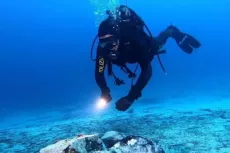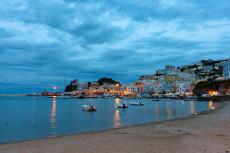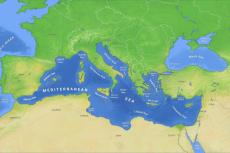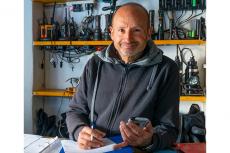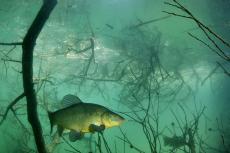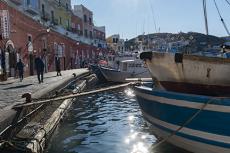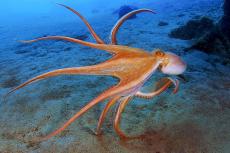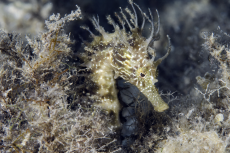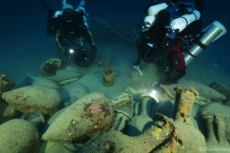In my line of work as a dive industry professional, I attend a lot of dive shows and get to meet a lot of people, most of them nice and interesting in various ways. It was also at a dive show in Italy, many years ago, that I first met Andrea Donati and his partner, Daniela Spaziani, of Ponza Diving. I clearly remember my first impression of how sympathetic, unpretentious and genuine the two came across, which scores a lot of points in my book. They appeared competent and organised, and with their operation located in one of the most picturesque locations I have ever seen, it did not take any arm twisting to lure me down there for a visit.
Contributed by
The world is dotted with beautiful locations, and there exist many excellent dive operations across the globe that also rightly deserve praise and accolades for the adventures and wildlife encounters they offer their patrons and for the way they manage their dive centres—and we will probably get more into that in the future. This profile will be about the virtues of diving Italian-style, as Ponza Diving marks its 30th season.
PS: Please reflect on your three decades of operations and the evolution you have witnessed in the dive industry.
AD: In 1991, when we first started, I recall divers as being more passionate and driven, and adapting more readily to the services we could offer in those times. Of course, diving equipment was not so sophisticated at that time. We dived only with air, no nitrox, no trimix and no oxygen for decompression and little knowledge about decompression. There was more risk then. Over the years, we have obviously expanded and improved our services, and we are now able to accommodate a wider range of requests and needs of customers.
We started off with just a 6m dinghy, a compressor and 20 tanks, but already in the first year, I bought another dinghy, another compressor and more tanks. Then in 1993, I came across an opportunity to buy a 12m fiberglass boat. That was the first time I operated a dive boat, and it was not easy to get the hang of anchoring it. In hindsight, I now consider mooring essential for a successful dive.
Year by year, the number of divers increased, and I kept reinvesting in the operation. In 1998, I bought the Nettuno, a 16m former fishing vessel, and converted it into a dive boat. It was always my objective that divers should not be required to change their tanks, so having compressors on board was a requirement. A wooden boat is fantastic but requires expensive maintenance, so I ended up selling the Nettuno in 2014 and buying an 18m boat with a fiberglass hull instead. We named it Nettuno II and spent four months over the winter building and outfitting this new vessel, which is bigger, faster, has more safety and is more comfortable than the older one. I enjoy a good relationship with Coltri Compressors, so we have fitted the boat with two MCH 23 compressors to refill tanks between dives.
PS: If you were to give your 30-year-younger self some advice, what would it be? Would you have done anything differently or not at all?
AD: In retrospect, I feel pleased with our accomplishments, our growth and that we have managed to offer cutting-edge service while specialising in rebreathers. It was hard during the first few years, in particular, but I was 30 years younger, physically stronger and more carefree—but certainly also less experienced.
PS: Why did you set up shop on Ponza Island of all places?
AD: I completed my Open Water Diver course in 1987, and from that moment, I kept diving whenever I got the opportunity. I first dived off Ponza in 1988, and I took to the underwater dive sites here, the clear water, natural arches, walls and a lot of shoals between Ponza, Palmarola and Zannone Island. I wanted to make a living out of diving, so in 1990, I entered into an agreement with a gentleman from Ponza who rented me the shop.
PS: At some point you decided to also become a technical diving facility. How and why did you arrive at that decision? When did you begin offering technical dive training?
AD: I always intended to explore deep-diving techniques as a means of discovering new dive sites. So in 1998, I started studying and signed up for technical diving courses using open circuit. I soon adapted our refilling station with a control unit for mixed gasses and booster pumps. In 2003, I switched my attention to rebreathers, using semi-closed rebreathers at first. But once the first Inspiration CCR became available, I focused my training on closed circuit and became an CCR instructor for Inspiration. I also tried other rebreathers but ultimately ended up with the JJ-CCR, which, in my opinion, is the best performing rebreather and comes with the best features for my needs. I was certified in 2012, and later, became an instructor, dealer and certified service centre for JJ-CCR units.
PS: What do you consider your greatest achievements or successes?
AD: It gives me great satisfaction that we have established ourselves and become known as a dive operation specialising in closed circuit divers and that the number of requests for courses keeps increasing year after year.
PS: Have you had any students whom you felt were not fit—mentally, physically or otherwise—to become a technical diver, or with whom you felt otherwise too uncomfortable about assuming responsibility for their training? How do you assess and handle these situations?
AD: It is never easy to explain to a hopeful diver who wants to sign up for a technical course that perhaps he or she is not adequately fit or capable of what is required in deep diving and decompression types of diving. It is not so much a question of physical capability but mental issues such as anxiety or limited capacity for managing problems underwater.
When I conduct courses on JJ-CCR, the first thing I emphasise is that closed-circuit diving is not for everyone. It requires a certain attitude, attention and awareness.
PS: You have now conducted a series of international Rebreather Meetings. (Editor’s note: See report in issue 92 at https://xray-mag.com/content/ponza-rebreather-meeting-2019-dive-learn-eat). Why did you decide to arrange these? Do you think or feel they have helped in building an international awareness about your operation?
AD: As I mentioned before, I have dedicated a lot of attention to technical diving, and so I decided—with my partner, Daniela, and my collaborators, without whom we would never have been able to get to where we stand today—to set up these events and invite some of the foremost authorities in their fields to become presenters in order to spread knowledge.
PS: Speaking of international guests, who were the first foreign visitors?
AD: To date, we have organised seven rebreather conferences, and in each event, we have had presenters such as the leading hyperbaric doctors Pasquale Longobardi, Corrado Costanzo, Simon Mitchell, Neal Pollock and Alessandro Marroni. We have had experts and rebreather designers such as David Thompson and Jan Petersen; technical diving instructors and writers such as Mark Powell; and equipment manufacturers such as Tomasz Stachura of Santi and Lynn and Bruce Partridge of Shearwater Research. During these meetings, there were daily dives after which divers were monitored with a doppler detector and clinical tests were performed as part of research conducted by doctors from DAN Europe.
PS: What are you doing to make your operation more known outside Italy and to attract dive travellers from other countries?
AD: Ponza is a fairly remote island, so we have organised transfer services from airports in Rome and Naples to the harbour in Ponza to make transit as easy as possible. We are also advertising in foreign magazines and have constant advertising on social media.
PS: What are your hopes and ambitions for yourself and your dive operation for the near and far future? What unfulfilled potential do you still see and how do you plan to go about realising your plans?
AD: I am hoping that the coronavirus outbreak will end soon. In 2021, we will celebrate the 30th anniversary of Ponza Diving on the island and conduct the eighth edition of the Rebreather Meeting. That aside, I would just like to continue with the training of CCR divers, because I believe it is the right and natural evolution in the experience of the most passionate and experienced divers.
PS: Is there an Italian style or way of diving?
AD: The dive is an important part of the day, but it is also combined with socialising, good food and enjoying a nice day out on a boat like the Nettuno II.
PS: If you are to dive just for your own pleasure, what kind of dive do you prefer?
AD: I just like being in the water, but wall diving is my favourite. I also prefer CCR diving, as I find it safer and it offers better performance than open circuit.
PS: What was your most memorable dive to date?
AD: In 1995, with the help of local fishermen, we located the wreck of a Douglas A20, a warplane from WWII, at a depth of 60m. This was one of the most stimulating dives ever, and the type of dive that initially fuelled my desire to venture into technical diving.
PS: Which personal learning experiences, classes or education has meant the most to you?
AD: Since I started diving in 1987, I have found it is an activity where one never stops learning.
PS: Do you have any role models or mentors, or people you admire, who have inspired you in business… or in life?
AD: I have had many instructors who have taught me a lot, and I owe them many thanks. A special mention has to be made of David Thompson who has been a key instructor in my understanding, and later teaching, of JJ-CCR rebreathers. I was also so fortunate to have a very good instructor for my own open water course in 1987, and it just so happened that he then became my student on a JJ-CCR course in 2019, which brought great satisfaction. ■
Learn more at: ponzadiving.com


